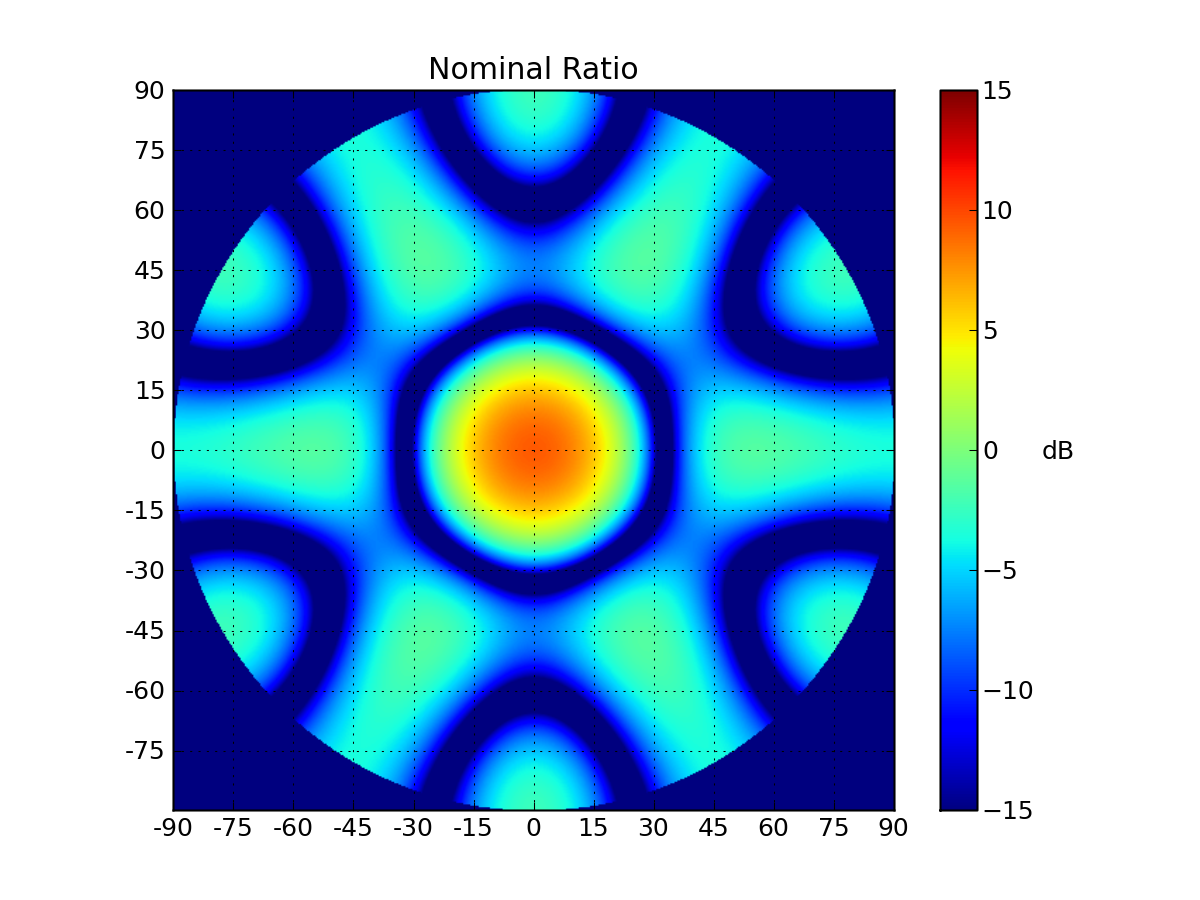Antenna Footprint
TBAD has been packaged in three different antenna configurations. This page helps identify which you have, and compares footprints and performances.
The early antennas were for 1090 MHz only, and consist of seven total patches in a hexagonal arrangement (one in the center and six around the periphery). The footprint is represented by light-blue in the overlap sketch, and identified by the hexagonal pattern and four vertical wind slots.
Starting in 2019, a universal plate with a seven-fold symmetry accommodates various patch configurations (original, dual-band, circular polarization). It is represented by black outlines in the overlap sketch, and identified by three wind slots: two vertical and one horizontal.

Three TBAD antenna plate designs. Holes are marked with lines aligned in directions particular to one footprint/color, so that it is easier to tell when holes from different designs overlap. Note that all four holes on the bottom edge align in all designs, as well as a few around the side periphery. The red and black outlines (seven-fold designs) are the same all the way around, and the peripheral holes are all the same for these two.
The plots below show the improvement in the sky pattern of the TBAD antenna ratio in going from a six-fold (left) to a 7-fold (right) symmetry. A typical BT threshold of 0.5 V corresponds to a ratio of 5 dB, so that the orange/red zones are in the "protected" zone.


Advantages of the new 7-fold design are: